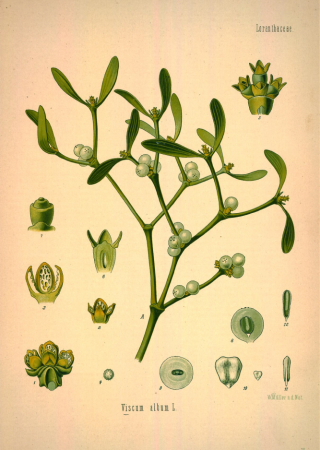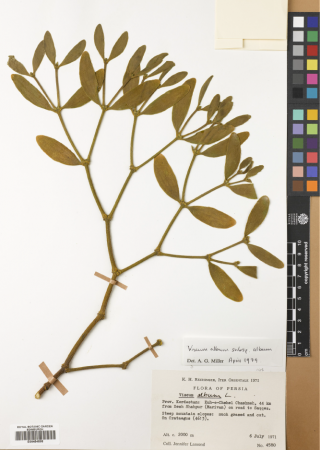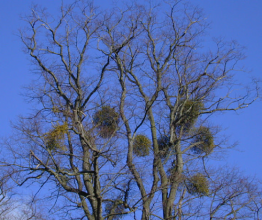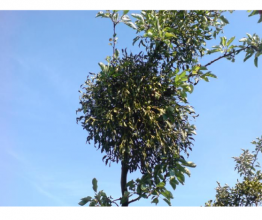European Mistletoe
- ...mistletoe is a hemi-parasitic plant, living on various kinds of trees?
- ...Celtic druids regarded mistletoe as sacred, believed that it was capable of curing all ailments, and used it as a cure for infertility?
- ...mistletoe is one of the symbols of Christmas, and tradition states that it brings fortune and blessings to a home?
- ...the custom of kissing under mistletoe was brought to Germany by British mercenaries?
- ...mistletoe contains the poison lectin, which strengthens the body's immune reaction against cancer and even slows tumor growth?
- ...some Christians believe that mistletoe was originally a tree, but withered into a small bush, because the cross on which Jesus was executed was cut from mistletoe wood?
- ...the mistletoe genus (Viscum) contains around 100 species, growing in tropical areas of Asia, Africa and Australia?
- ...the substance viscin, extracted from mistletoe sap was used to trap birds, due to its sticky property (birdlime)?
Basic information:
Division – angiosperms (Magnoliophyta)
Class – eudicots (Rosopsida)
Maximum height – 1 m
Distribution – Europe, Asia (Viscum album)
Type of poison – polypeptides
Distinguishing marks:
The plant grows as a semi-spherical tuft on trees. Branches are forked and break easily. The pods are tiny, irregular berries, white to yellow in color.
Mistletoe is an angiosperm, living as a hemi-parasite on other plants. It uses its special root-like organs (haustoria) to steal nutrients, water and minerals from its host. As opposed to true parasites, it also uses photosynthesis to create its own organic substances. There is only one species of mistletoe in Europe: European or Common Mistletoe (Viscum album). It can grow on deciduous or coniferous trees, dependent on the subspecies. The poisonous qualities of mistletoe have not been conclusively proven; only larger quantities are known to cause diarrhea and stomachaches. Only in nursing infants can poisoning have more severe consequences.




